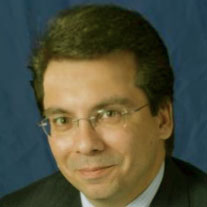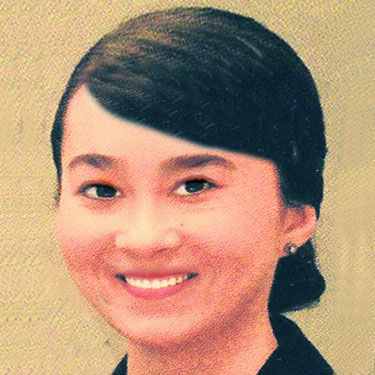翻译课上学语言
作者:古龙 2009-07-04




语际翻译公司 转载请注明https://www.scientrans.com
∗本栏目部分文章内容来自互联网,部分已经过本站编辑和整理,如有版权事宜请联系Email/MSN jesczhao@hotmail.com
On the university level, learning may be enhanced through the intrinsic motivation of the student. Intrinsic motivation is the belief that the material being taught has a direct relationship to the real-life needs of the students. For instance, a translation student who wants to work with the European Union after obtaining a degree will quickly grasp the necessity of knowing the intricacies of Europe's geography. Relevance to the student's future plans makes this assignment intrinsically valuable. The instructor will not have to insist that the student study carefully. On the other hand, extrinsic motivation is the material benefits students earn when they prepare an assignment. A high mark is extrinsic motivation to do well; a scholarship, a high-profile internship are also examples of extrinsic motivation. Even though it is evident that a mature student should work for the intrinsic value learning has, extrinsic motivation is an added plus. In fact, there have been many studies done that have shown clearly how motivation enhances learning (Good,T. & Brophy, J. 1991). The self-efficacy theory has shown that students vary in the way they evaluate their ability to learn. Some students believe that they have a high ability to learn and generally perform at high standards. Others see themselves as slow learners, or see certain subjects as difficult to comprehend. They are directly influenced by their perceptions of their learning abilities and may not perform to their potential. University instructors should be sensitive to the perceptions students have of their abilities and teach so that students see that success is an achievable goal.
It is clear from the learning theories above that university education is not an end in itself and university instructors are not only fonts of knowledge. Today's university instructor provides tools so that students may themselves build their knowledge base.
How students learn languages and are able to use them to earn a living is quite a complex subject. If you experiment and look up the word "language" in a linguistic book index, you will see that you are asked to consult, "meaning." This is not at all surprising since languages do not exist in a void. Without meaning, language is gibberish. One of the most common normative definitions of the term "language" is: "a body of words and symbols governed by rules that tie people together into a speech community." When people of one speech community wish to communicate with those of another community, translators are needed. When methods of communication between communities are studied, education is also a factor to be considered. According to Hodge, (2000,p.1), "good teaching and good learning alike are so dependent on language and communication that the two are inseparable." Translators and media specialists have the enormous responsibility of assuming the role of a bridge between communities who either have the need to communicate such as in the translation of technical texts, or who desire access to another's cultural richness. Knowing the other's language as intimately as possible is the basic means of accomplishing these tasks with success.
The language study is one of the oldest domains in education. The four basic elements of culture: language, communication, translation and education have been examined since at least 1600 b.c. when we first have proof that linguists were questioning the sources of language (Framkin & Rodman, 1998:26). Even though language and discussion of how people learn language have been with us for a long time, there is a still a lot we do not know. Many linguistics textbooks still amazingly begin with statements such as "we know only this," "there is a lot we do not know," or "yet unknown mechanisms." Scholars are still trying to determine how people learn a first language and what parts of that mechanism are, if any, are transferred when we learn a second or third language. According to neurolinguists, the main language centers are located in the left hemisphere of the brain (Fromkin & Rodman, 1998:56). Broca's area, in the front, Wernicke's area in the back, and the angular gyrus, also located in the back of the brain are known to play the main role in a person's language ability (Steinberg, 1993: 180.)
As a translation instructor, it is definitely not necessary to become a neurolinguist, but it is
- 评论
- seme:文章内容文章内容文章内容文章内容文章内容文章内容文章内容文章内容文章内容 章内容文章内容文章内容文章内容文章内容
- seme:文章内容文章内容文章内容文章内容文章内容文章内容文章内容文章内容文章内容 章内容文章内容文章内容文章内容文章内容

- 谈翻译观念的嬗变与翻译技能的训练
2009-6-15 15:33:10 - 《高等学校英语专业英语教学大纲》中规定,大学生通过四年的在校学习,“能运用翻译的理论和技巧,将英美报刊上的文章以及文学原著译成汉语,或将我国报刊、杂志上的文章和一般文学作品译成英语……。译文要求忠实...
- 翻译与网络营销
2009-6-11 0:02:31 - Translation and Your International E-Commerce Strategy Most businesses realize that they ...
- 第四届IEEE生物信息与生…
2009-6-30 19:42:01 - 基本信息 主办单位: 四川大学,IEEE生物医学工程协会(EMBS) 承办单位 开始日期 2010/06/18 结束日期 截稿日期 2009/1...
- 第九届全国光电技术学术…
2009-6-30 19:35:58 - 基本信息主办单位: 中国宇航学会光电技术专业委员会承办单位 开始日期 2009/11/01结束日期 截稿日期 2009...
















